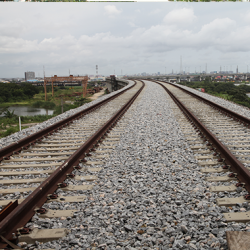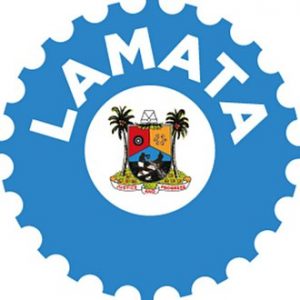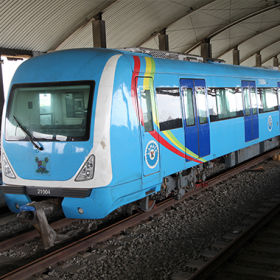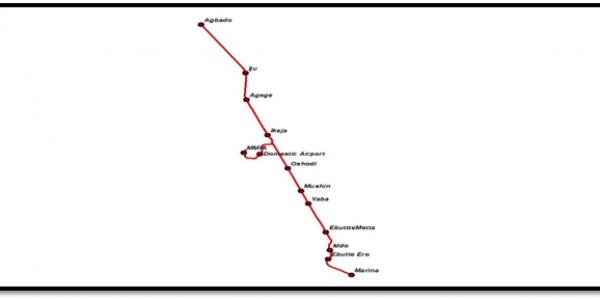
LAGOS RAIL MASS TRANSIT
The Lagos Rail Mass Transit (LRMT) network is a major component of the Strategic Transport Master Plan (STMP) which has been developed to guide as a compass for the development of public transport infrastructures in the State. The STMP is a 30-year plan put together under series of intensive researches, studies, and analyses of future transportation demands and needs of Lagos State as Nigeria’s commercial and economic hub and one of the world’s fastest-growing megacities.
COMPONENT OF LRMT
The Lagos Rail Mass Transit (LRMT) is a network of urban rail-based systems covering six major corridors and one monorail routes of high commuter traffic demand within and beyond the metropolitan Lagos extending to border areas of Ogun State.
The LRMT lines planned along priority and high commuter demand corridors within the Lagos metropolis and farther. The six lines and monorail link the major population and activity centres in the state, as well as taking advantage, where possible, of existing transport corridors. The network is fully integrated with planned and existing water transport and BRT routes. These lines are:
Blue Line
Okokomaiko to Marina
Purple Line
Redemption Camp to Ojo
Green Line
Marina to Lekki Free Trade Zone (Airport)
Yellow Line
Otta to National Theatre
Red Line
The Red Line is a 37km North – South rail route proposed to run from Agbado to Marina with twelve proposed stations at Agbado, Iju, Agege, Ikeja, Shogunle, , Oshodi, Mushin, Yaba, Ebute Metta (EBJ), Iddo, Ebute Ero and Marina with connection to the airport (MMIA International, MMIA Domestic). A recent development has resulted in the Red Line project sharing Nigeria Railway Corporation’s (NRC) rail track from Agbado to EBJ and then carry-on across the Lagoon to Marina via Iddo, with the Marina Station sharing the hub with the Blue line station and integrated with other transport modes. The proposed gauge for the Red Line is the International Standard Gauge (1435 mm). The Line is expected to carry 750,000 passengers per day at inception and 1.1m when fully operational.
MAJOR COMPONENTS OF RED LINE
- The Red line will be constructed in two phases. The first phase would run from Oyingbo to Agbado while the second phase would take the project from Oyingbo to Marina.
- Lagos State Government would build overpasses at Oyingbo, Yaba, Mushin (Kayode/Ogunmokun Streets) and Ikeja.
- There would be train stations at Oyingbo, Ebute-Metta, Yaba, Mushin, Oshodi, Shogunle, Ikeja, Agege, Iju and Agbado. The Red line will in future have a link to the Lagos Airports.
Orange Line
Ikeja to Agbowa
The North-South corridor between Agbado and Iddo along the Nigerian Railway corridor; the Eastern corridor to serve the emerging development along the Lekki to Epe axis; and the western corridor along the Mile2 – Okokomaiko axis.
Others are: Marina to Lekki axis, Redeem to Ojo, Otta to Iddo, Redeem to Marina and Mile 12 to Marina route. The seven corridors will be connected by a central ring road between Victoria Island and Lagos Island.
Blue Line Rail Project: The Blue Line is a 27 km railroad with thirteen stations from Okokomaiko to Marina. The Blue Line is undergoing construction right in the middle of Lagos-Badagry Expressway which government is currently expanding and redeveloping into a ten-lane international gateway. Apart from the rail, the infrastructure design also includes provision for BRT and multimode integration with Non-Motorized Transport [NMT] such as pedestrian walkways and overhead bridges for safe access by passengers to rail and bus stations.
Work commenced in August 2009 for construction of the Blue Line rail infrastructure, awarded to China Civil Engineering Construction Company (CCECC) as a design and build contract. CCECC prepared the detailed plan, design and construction work for the rail infrastructure. These works include stations, roadbed, bridges, permanent way (P-way) tracks works, pedestrian ways, and other associated fixed infrastructure.
All survey work, a proportion of the detailed design work and mobilization of the contractor was completed between August 2009 and August 2010. The fixed infrastructure is to be implemented in phases and actual construction work commenced with a groundbreaking ceremony attended by His Excellency, Governor Babatunde Raji Fashola on 26th July 2010. Construction works are ongoing for the first phase section between National Theatre and Mile 2. The infrastructure for the first phase is expected to be completed within the first quarter of 2014 while operation would commence after the conclusion of negotiation with the concessionaire, which is expected to provide the rolling stock, operate and manage the rail line
Proposed Trains: The types of trains proposed for the Blue Line Rail Project are Electric Multiple Units (EMUs). EMUs are emissions-free and therefore do not pose problems of environmental pollution usually associated with conventional diesel locomotives. EMUs are proven to be more efficient and easier to maintain than diesel locomotives.
Initially, the Blue Line will carry 400,000 passengers daily with capacity increased to 700,000 passengers daily when the rail route becomes fully operational. To incorporate the use of EMUs, a depot including power generating plant has been proposed for construction at the final westernmost station, Okokomaiko. The depot will serve as train maintenance and repair yard, sidings, final train destination, office complex and power station.
The selected concessionaire will be responsible for providing rolling stock, operations, and maintenance for a 25 year period. These include station operations, staffing, maintenance, ticketing, cleaning, information, services kiosk, centers and all other services needed to provide excellent train services for passengers.
Once the Blue Line becomes operational, rail public transport will be incorporated into the integrated ticketing and fare systems making travel between different modes a seamless operation. This seamless approach will also be applied to the provision of information about other transport modes and timetables between different modes [BRT, LRT, Ferry, etc] at rail stations to enable precision journey planning.
Lagos Rail Mass Transit Network identified by LAMATA
- Stimulate economic growth, development and job creation.
- Reduce severe traffic congestion
- Promote the use of public transport
- Improve the image of public transport and attract more car
- users to public transport
- Promote business tourism
- Significantly contribute towards urban restructuring, shortening of travel
distances and improving city sustainability - Improve road traffic safety
- Increase travel efficiency and workers’ productivity
- Improve the quality of the environment – air and life






